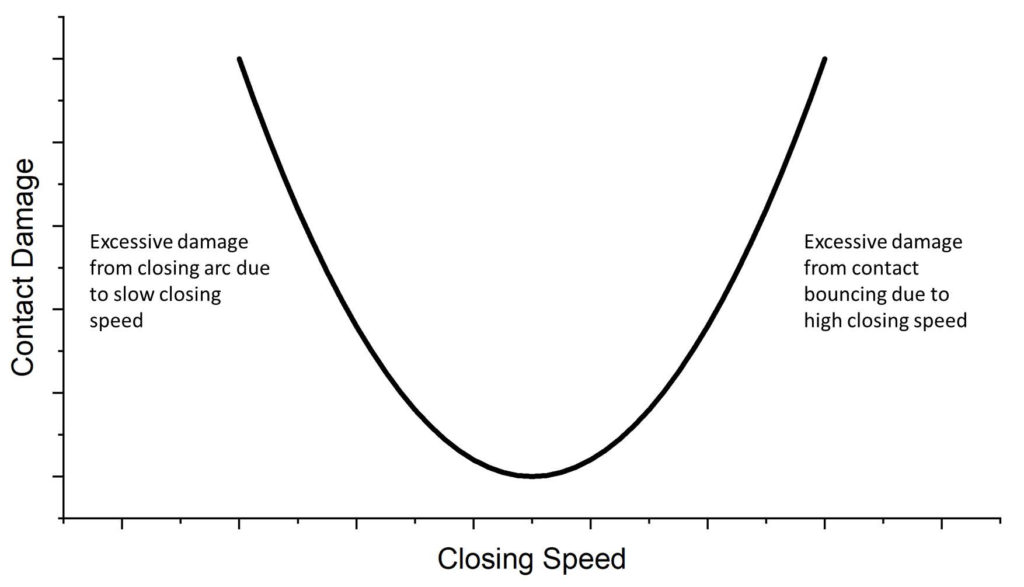Switch bounce is the momentary separation or reduction in force between the contacts in a switch after closing due to elastic rebound of the system. The momentary separation of contacts after closing will cause the formation of a subsequent electrical arc; this causes arc erosion and/or arc transfer between contacts and reduces the overall contact lifetime. Additionally, the localized heating resulting from arcing, or increased contact resistance resulting from reduced contact force, increases the likelihood of welding the contacts closed and increases the overall strength of the resulting weld. A general schematic of contact bounce can be found in Figure 1.

Figure 1: General diagram of switch bounce showing two bounces that completely open the contacts and two additional bounces that reduce contact force.
There are some circumstances where contact bounce can cause a more rapid degradation of the contact surfaces. Motor starters, or other applications that have a high inrush current, peak at the same time that the contacts bounce; creating higher current arcs that result in greater erosion, melting, and welding of the contact. The second is in DC switching operations where the current flow is only in one direction making them susceptible for one directional material transfer and the formation of a buildup or ‘pip’ on one contact and a localized area of erosion or ‘crater’ on the other. The short, repeatable duration of bouncing arcs can be ideal for directional arc transfer resulting in rapid failure of contacts in DC switches with bounce.
Contact bounce is a consequence of the kinetic energy of the closing contact assembly. A reduction in kinetic energy will reduce the likelihood and severity of the bounce; this can be achieved through the reduction of the assembly’s mass or a reduction in closing velocity. Unfortunately, it is also desirable to minimize closing arc duration, and this is frequently done by increasing the closing velocity. Thus, a tradeoff is established between damage and closing speed; too slow and the closing arc causes damage or too fast and the damage is caused by bouncing, Figure 2. Similarly, the weight and size of the contact are constrained by the need to achieve lifetime targets so there is a limit on how far the mass of the contact can be reduced.

Figure 2: General schematic illustrating the relationship of contact damage to closing speed.
Once the closing speed and assembly mass have been optimized there are a few more tricks that can reduce contact bounce. Higher contact forces can help to overpower potential rebound but also necessitate an increase in the overall strength of the assembly to prevent yielding or fatigue. Additionally, wipe or sliding of the two contacts against each other on closing can help dissipate the excess energy though friction at the cost of increased wear to the contact surface.1
Once mechanical factors have been optimized materials should be selected based on the final expected performance of the switch. General material guidelines can be found in Tech Brief 37: Arcing Contact Materials Selection, and adjustments can be made based on the final design and observed degradation rate of the contacts.2
Deringer-Ney has experience producing contacts and switch components from a wide variety of materials and designs to support a broad customer base, ranging from semiconductor testing to power distribution. Deringer-Ney is able to support the design, prototyping, and final high-volume production of switch and contact components.
References: